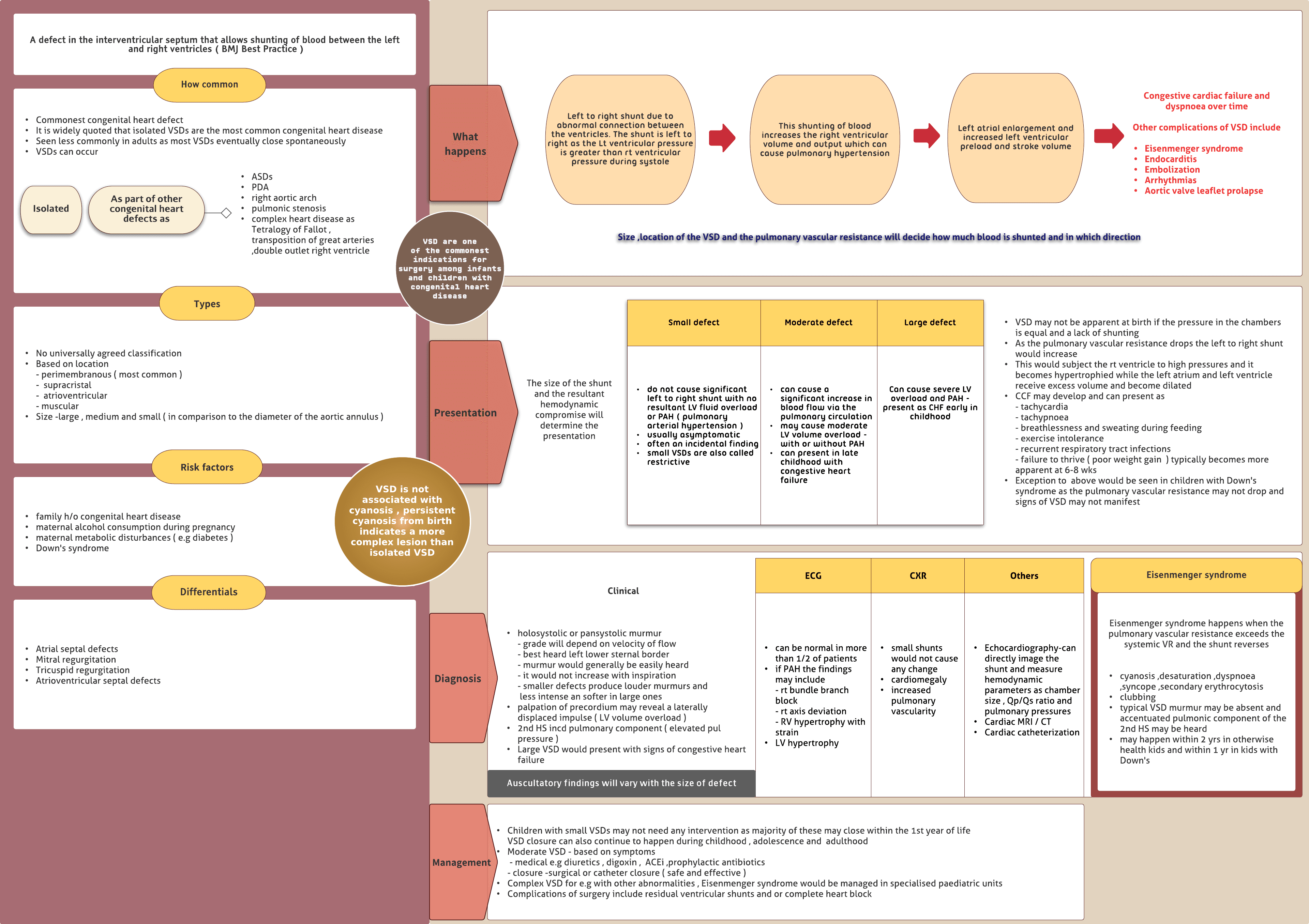Download A4Medicine Mobile App
Empower Your RCGP AKT Journey: Master the MCQs with Us!

Ventricular septal defect -A defect in the interventricular septum that allows shunting of blood between the left and right ventricles ( BMJ Best Practice )
How common - Commonest congenital heart defect It is widely quoted that isolated VSDs are the most common congenital heart disease Seen less commonly in adults as most VSDs eventually close spontaneously VSDs can occur
Can happen in isolation or with other abnormalities as ASDs PDA right aortic arch pulmonic stenosis complex heart disease as Tetralogy of Fallot , transposition of great arteries ,double outlet right ventricle.
Types -No universally agreed classification Based on location- perimembranous ( most common )- supracristal- atrioventricular- muscular Size -large , medium and small ( in comparison to the diameter of the aortic annulus )
Risk factors - family h/o congenital heart disease maternal alcohol consumption during pregnancy maternal metabolic disturbances ( e.g diabetes ) Down's syndrome.
Differentials - Atrial septal defects Mitral regurgitation Tricuspid regurgitation Atrioventricular septal defects.
What happens- Left to right shunt due to abnormal connection between the ventricles. The shunt is left to right as the Lt ventricular pressure is greater than rt ventricular pressure during systole.
This shunting of blood increases the right ventricular volume...
Try our Free Plan to get the full article.